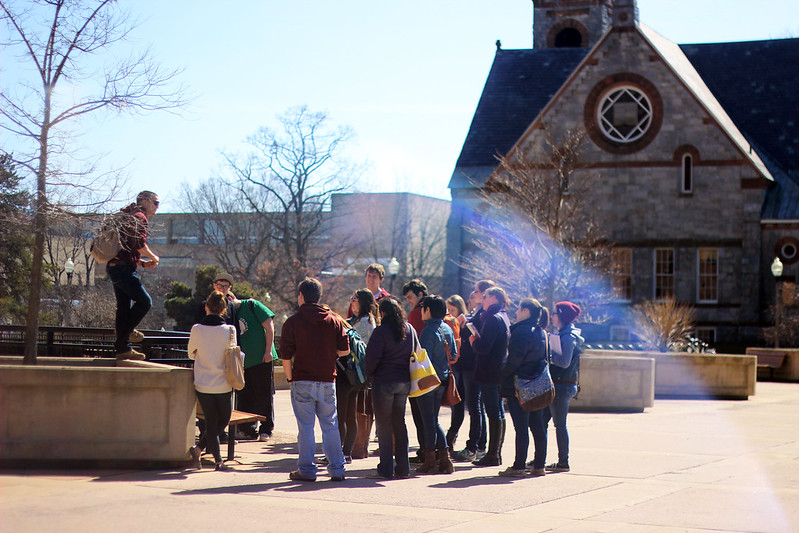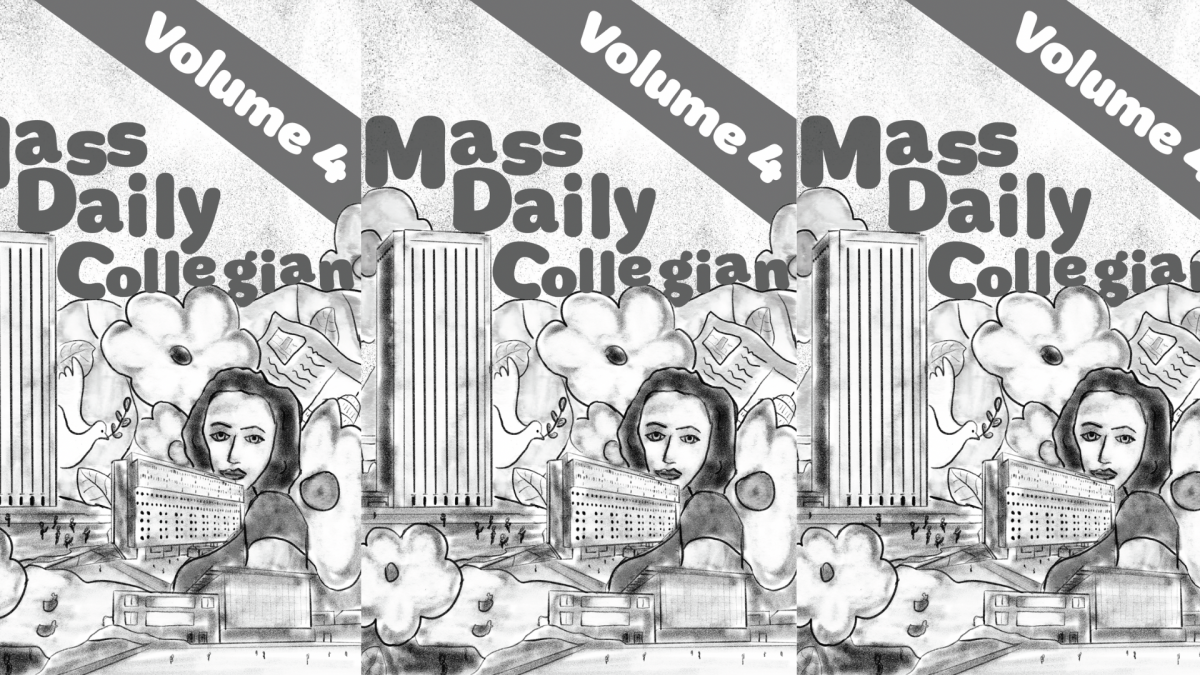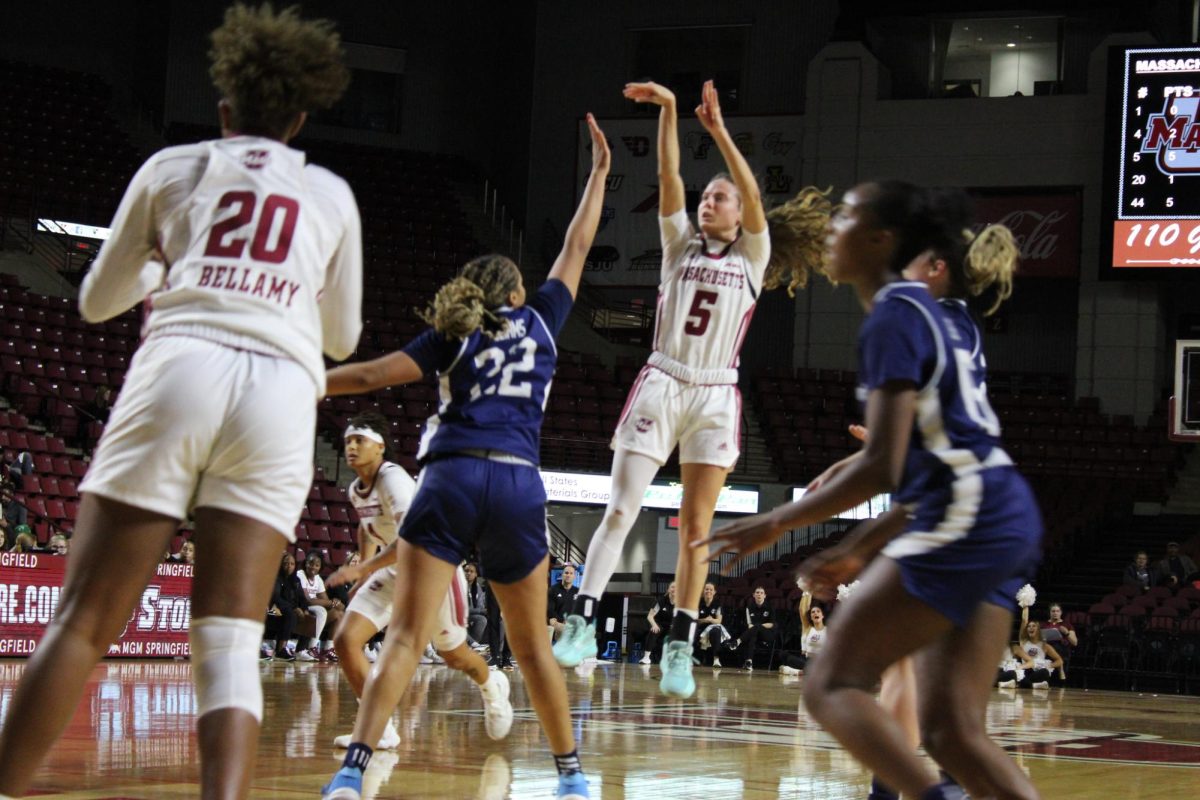The University of Massachusetts community has recently grown more open in voicing their opinions over issues concerning admissions. Many speak on the ongoing housing crisis and over-admittance of students. Others say that UMass has not put enough effort into recruiting students from marginalized communities. Despite this, UMass boasts admitting the largest, most diverse and accomplished incoming class nearly every year.
The first goal in the University’s strategic plan is to improve enrollment demographics by, “taking account of state, national, and international demographic shifts, impact of rising student costs, and other trends.”
The plan has so far been successful as the undergraduate population size steadily grew and the student demographic saw improvements in diversity.
The most notable change that occurred has been in international admissions. In 2012, the year that Chancellor Kumble Subbaswamy arrived, UMass had 104 first-year international students from 35 different countries. Now, the fall 2023 class of international first years is expected to be 500 students from over 100 countries. That marks a 177 percent increase in the past decade, with international students going from making up 2 percent of the incoming freshmen population to now 10 percent over the span of the past 11 years.
Kregg Strehorn, the assistant provost for enrollment management, largely attributes this progress to the work that Subbaswamy has done in making UMass an internationally renowned research institution. Improvements to programs such as those in the Manning College of Information and Computer Science and the Isenberg School of Management, as well as research collaborations with other institutions helped widen the University’s name recognition around the world.
“As our rankings went up, so did our popularity. And that became, quite honestly, the single most important factor in recruitment of international students,” Strehorn said.
He also noted that Subbaswamy, who is originally from Bangalore, India, “came as an international student to the United States to do his graduate degree. And so he has a lot of empathy for that process, and a very good understanding of it.”
UMass’ racial and ethnic diversity has also improved on the domestic side, as the percentage of students of color in each new freshman class increased by 12 percent from fall 2012 compared to fall 2022. This progress appears to be organic, as the University uses affirmative action in employment policies but does not have any diversity quotas for admissions.
The trend is not representative of every community, however. Further breaking down UMass’ demographics reveals a decline in those who identify as American Indian or Alaska Natives, from 32 total students in 2012 to 17 students in 2022. In the same timeframe the number of Native Hawaiian or other Pacific Islander students has remained stagnant at around 15 total undergraduates.
Though graduate admissions differ greatly, the correlation between UMass’ growing reputation and the amount and diversity of applicants also holds true for their process according to Jonathan Wynn, a professor and chair of the sociology department.
“The job of the admissions committees for graduate programs gets harder when the prestige of their program and the prestige of the University increases,” he said.
Many departments also only accept a handful of graduate students each year. For instance, the Department of Linguistics, whose PhD program consistently ranks within top four in the world, only admits five to eight applicants a year.
On the other hand, UMass’ growth hasn’t been entirely beneficial. The socio-economic diversity of the campus has not widened in the past ten years. As the University’s competitiveness and cost grew, the number of incoming first years who are federal Pell Grant recipients has stagnated around 4 percent. Unlike some private colleges, UMass does not promise to meet the entirety of students’ financial need and full scholarships are only available for a small number of student athletes.
The increase in the international student population has been one of the factors that contributed to this issue. Because the largest merit aid international students can receive covers less than 30 percent of the international tuition, this demographic has typically been a more affluent group of the student body. Many are recruited from communities of high schoolers who already have expensive educational backgrounds and F-1 visas.
“I realized early that about a quarter of our international students were coming from East Coast boarding schools,” Strehorn said, “So I filed that away. That should be low hanging fruit right there in our backyard already.”
Overall, the student population has followed a slow growth model during the past decade. From 2012 to 2022, the undergraduate population gained around 2,463 students, while the graduate student population grew by about 1,530. Still, many consider this to be too great of an increase as the University continues to struggle with overcrowded dining commons and meeting students’ demand for on-campus housing.
Isenberg was one school that also struggled with this issue within their academic resources. In 2021 it was announced that they would no longer be allowing internal transfers for students who did not get into the business school directly from their admission decision. In the fall semester of that year, Isenberg had 421 more students than could be accommodated for with instructional space and faculty members.
The biggest disruption to college admissions in recent years has been the COVID-19 pandemic, and UMass is no exception. Public health and economic uncertainty at the height of the pandemic altered college plans for many students, which are reflected by a couple of small but notable changes in the University’s admissions trends.
Freshmen yield, which is the percentage of admitted students who end up enrolling, consistently hovers around the 20 percent mark for the University. However, as many students were compelled to take gap years or forego going to college altogether, in 2021 it dropped to 17 percent. Numbers suggest that UMass tried to counteract this lower enrollment by admitting more transfer students. The fall transfer acceptance rate that same year reached a high of nearly 72 percent, however these statistics have already started returning to their previous levels as UMass’ admission trends have bounced back quickly from COVID.
“We’re having the best year so far in the history of the University. We have more applications on the domestic side and more applications from international students than ever before,” Strehorn said.
Kami Nguyen can be reached at [email protected] and followed on Twitter @kamihnguyen




















